| thepotteries.org |
The Poonah Pattern |
|
|
The
young lady’s book: a manual of elegant recreations, exercises, and
pursuits |
Poonah
painting:
Poonah painting was a style popular in the 19th century in which "thick opaque color is applied without background and with scarcely any shading, to thin paper, producing flowers, birds, etc in imitation of Oriental work" (Websters dictionary, 1913). The article from "The young lady’s book: a manual of elegant recreations, exercises, and pursuits" published in 1829 shows the popularity of Poonah painting.
Introduction of the Poonah pattern: Capitalising on the popularity of Poonah painting amongst the middle classes Minton first introduced the POONAH pattern in the mid 19th Century, it proved to be popular and was rapidly copied by other manufacturers. Minton reissued the pattern from around 1900, extending into the 50s. Originally Poonah ware had three firings in all, with the thick, top-decorated enamels being applied by hand, just before the third and final firing.
Variation on the pattern: The original Poonah design incorporates a vase containing flowers. Other manufacturers produced patterns called POONAH which were not the same as the original but contained certain elements of the design.
|
| The
pottery pattern named ‘Poonah’ seems to have different variations-
why is that?
1) Imitation of Indian designs
2) Multiple potteries using the same name
3) Pattern evolution within one pottery
4) Consumer taste and export markets
So in summary: the variations aren’t accidents, but a mix of cross-cultural inspiration, loose naming conventions, and flexible production practices in the Victorian ceramics industry.
|
The Poonah Pattern by Minton
| Minton
introduced the original Poonah pattern in the mid-19th century,
featuring a vase containing flowers, executed with thick enamels applied
by hand before a final firing.
The central vase motif is a defining element of the original design. |
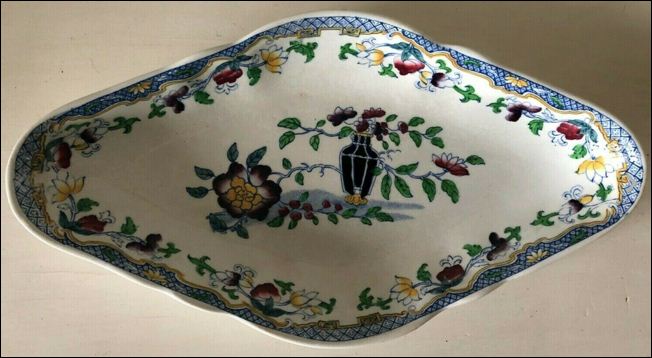
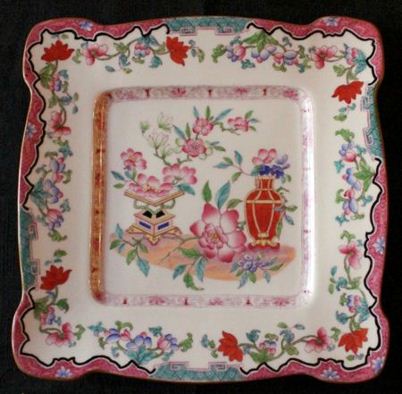 |
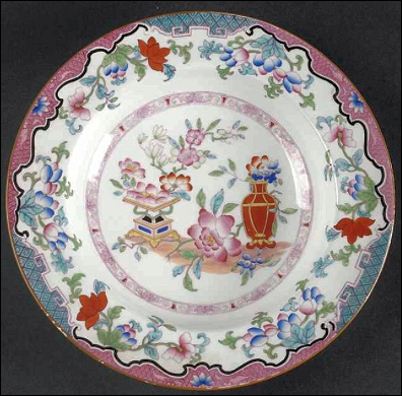 |
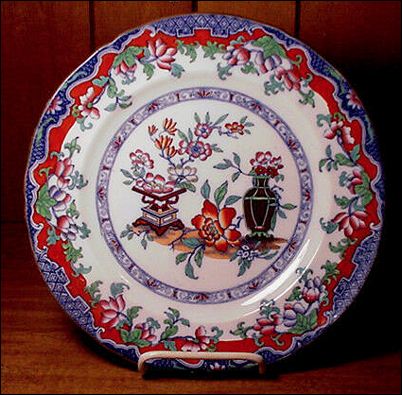 |
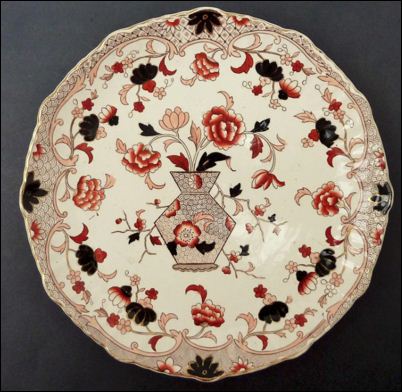 |
variations on the POONAH pattern - all by Minton
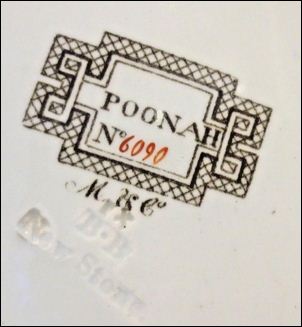
M & Co
BB
New Stone
M & Co (Minton & Company) mark used c.1841-73
BB 'Best Body'
Minton reissued the
pattern from around 1900
| Minton
reissued the Poonah pattern from around 1900 well into the 1950s, marked
by the globe-style backstamp used from 1912–1950
These reissues featured updated and simpler design and sometimes altered colours, yet retained the original name for continuity and marketing.
|
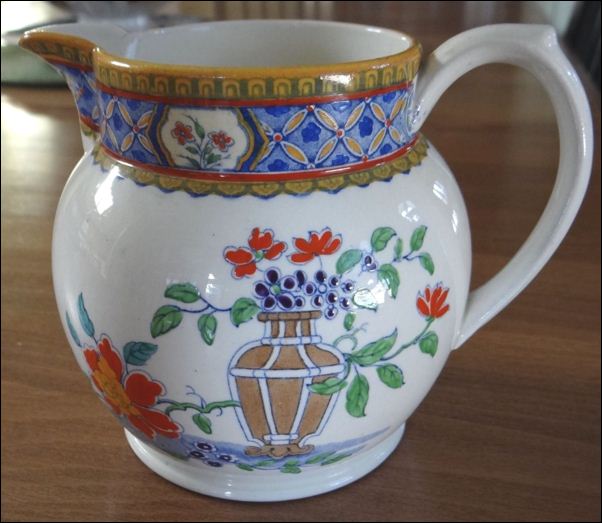 jug in the POONAH pattern - by Mintons |
|
Other manufacturer's Poonah patterns - with the Vase element
|
this pattern is in the aesthetic style |
the registration number 88386 shows that the pattern was registered on the 1st December 1887 |
|
|
1842-68 Bowers not only copied the Minton Poonah pattern ware they reproduced the style of the mark that Minton used. |
Other manufacturer's Poonah patterns - without the Vase
|
Competing makers such as Ambrose Bevington (registered 1887), G. F. Bowers (1842–68), Charles Meigh (1835–49), Bates, Walker & Co (registered 1876), and Bishop & Stonier (1891–1939) all produced their own “Poonah” patterns often with unique layouts, colour schemes, or methods (e.g. hand-painted vs. transferware). The term “Poonah” tapped into Victorian England’s fascination with oriental-style decoration (named, albeit inaccurately, after Pune in India) This aesthetic appeal meant manufacturers could adapt, simplify, or elaborate upon the design to match contemporary tastes or production techniques without changing the name. |
|
|
1842-68 |
|
|
1835-49 The Meigh family (& other potters) added marks similar in style to those used by Chinese porcelain manufacturers to give the impression of the orient to their ware even though it was produced in England. |
|
this plate and the footbath shown above are both in the Poonah pattern - they contain similar elements in the border and the flower / leaf arrangements. The plate has gilt highlights and edging which, presumably, were seen as an unnecessary and costly embellishment on the footbath. |
1835-49 |
photos courtesy: Steve Shale
|
|
1875-78 the registration diamond gives a date of 5th Sept 1876 for the registration of the pattern |
1878-81 |
|
|
1891-1939 |
Questions, comments, contributions? email: Steve
Birks
|
Page created 21 Dec 2019 21 Dec 2024: Example of Bishop & Stonier Poonah pattern added. 26 Aug 2025: Example of Charles Meigh Poonah pattern plate added; explanation of the variation in design of the pattern. |